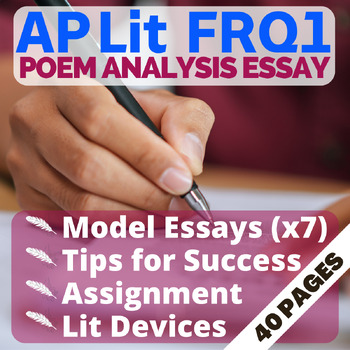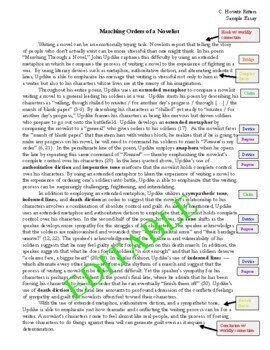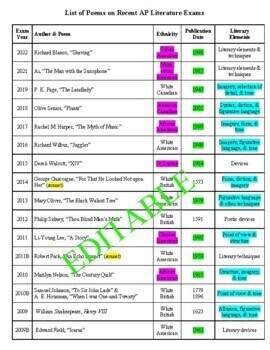AP Literature FRQ1: AP Lit Poetry Analysis Essay | Assignment, Models, & Rubric
- Zip
What educators are saying
Description
This 40-page EDITABLE resource will help your students write high-quality Poem Analysis Essays. Learning how to generate a formalist analysis of a poem will enable your students excel on Free Response Question #1 (FRQ1) from the AP Literature and Composition Exam. Because most students find the genre of the Poem Analysis Essay to be new and unfamiliar, the primary purpose of this resource is to provide students with models or exemplars of well-written essays on a wide range of poems. But the resource is also intended to equip you with enough prompts and templates that you'll be able to give your students ample practice at writing Poem Analysis Essays.
Here's what you'll find in this 40-page AP Lit resource:
• Tips for Success: This two-page handout contains detailed instructions for how to generate a formalist analysis of a poem. How do the formal elements and literary devices in a poem contribute to its meaning? What steps should a student follow when annotating a poem from Free Response Question #1? (2 pages)
• Model Essays (Exemplars): This resource features no fewer than 7 model essays that you can use to show your students how to write a Poem Analysis Essay. The model essays provide students with numerous examples of how to write a hook, thesis, topic sentence, etc. The model essays focus on poems by Emily Dickinson, Robert Frost, Gwendolyn Brooks, William Stafford, John Updike, Elizabeth Bishop, and Rhina Espaillat. (14 pages)
• Template to Create Your Own Essay Prompt: Use this template to create your own FRQ1 assignment. Just insert any poem that you think is sufficiently complex to warrant a complex written analysis. (5 pages)
• Glossary of Literary Devices: A glossary with definitions and examples of the various types of figurative language, imagery, stanzas, syntactic devices, etc. Many teachers already have a glossary of literary devices, but I'm providing this in case you need one. (2 pages)
• Analysis of Trends on Recent AP Lit Exams: This analysis of poems included on recent AP Lit Exams yields several insights that should inform how you construct your literature curriculum. Should you prioritize older poems or diverse authors? Sonnets or free verse? (2 pages)
• Grading Rubric: The rubric includes columns that will enable you to give feedback on each student's thesis, textual evidence, analysis of literary devices, organization of paragraphs, and mechanics. (1 page)
This poetry unit will come to you in a single 40-page EDITABLE Word document. My store is called “Rigorous Resources” because all of the resources contain rigorous content that will motivate students to generate in cogent and insightful essays.
Because I believe that teachers should be able to see exactly what they'll be getting before they purchase, the preview for this resource allows viewing accesses to over 15 pages. Click on the green “PREVIEW” button to see exactly what you’ll get. . . .
Thank you for choosing “Rigorous Resources”!!
Happy teaching!
Adam Jernigan, Ph.D.
adamjernigan@gmail.com
P.S. Don't forget to click “follow” for email updates on new products by Rigorous Resources. New products will be 50% OFF for the first 24 hours!





